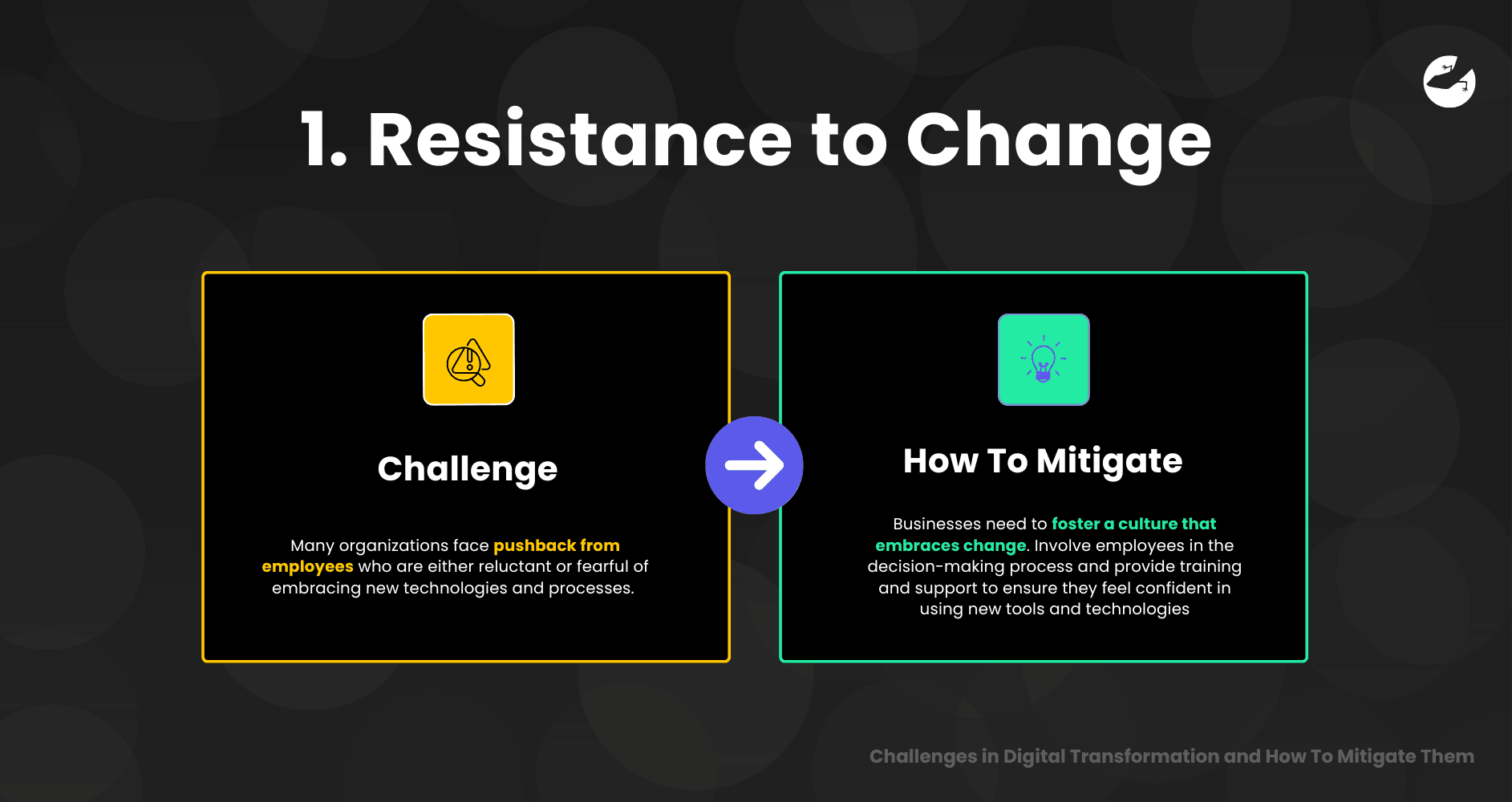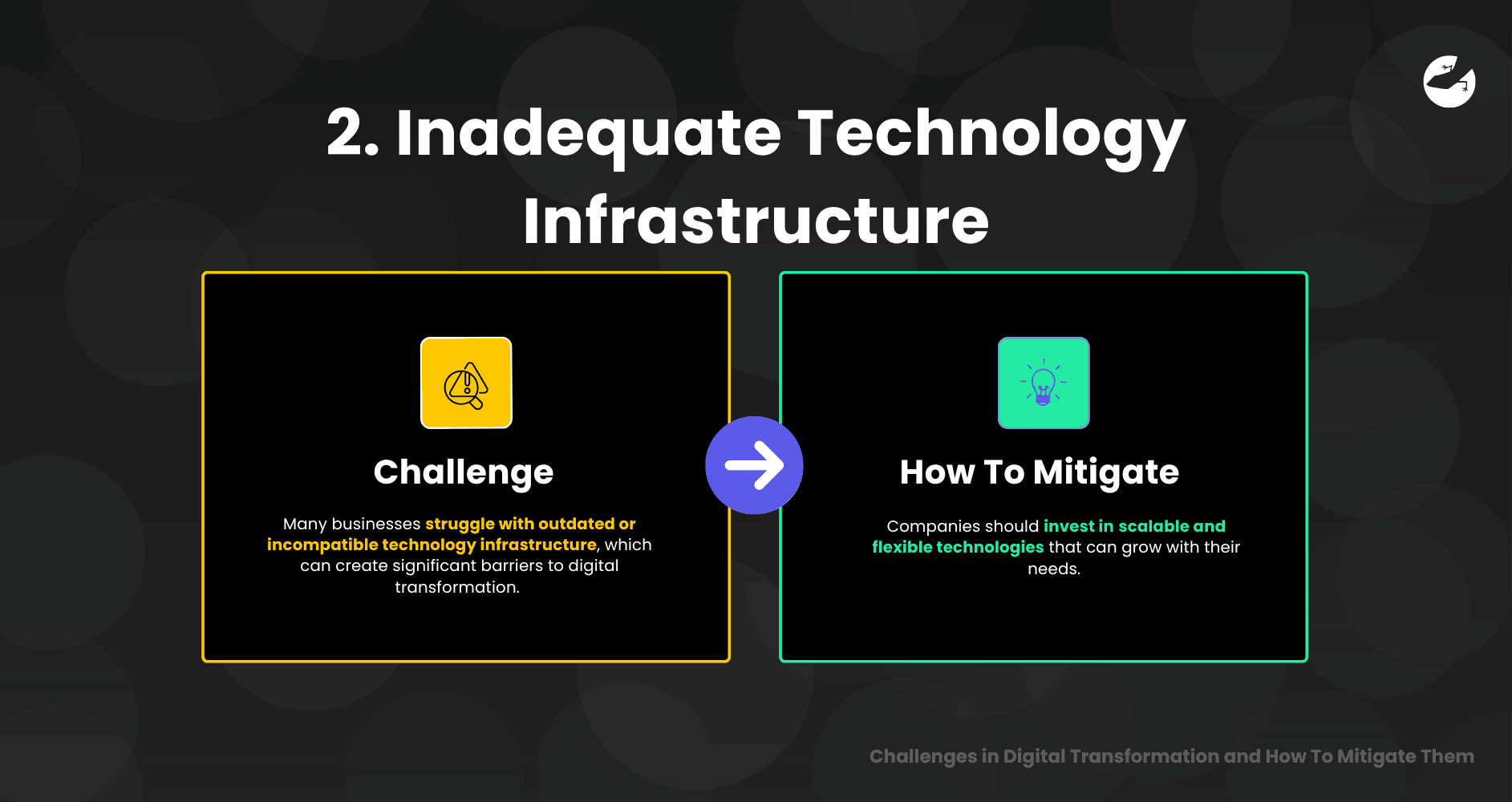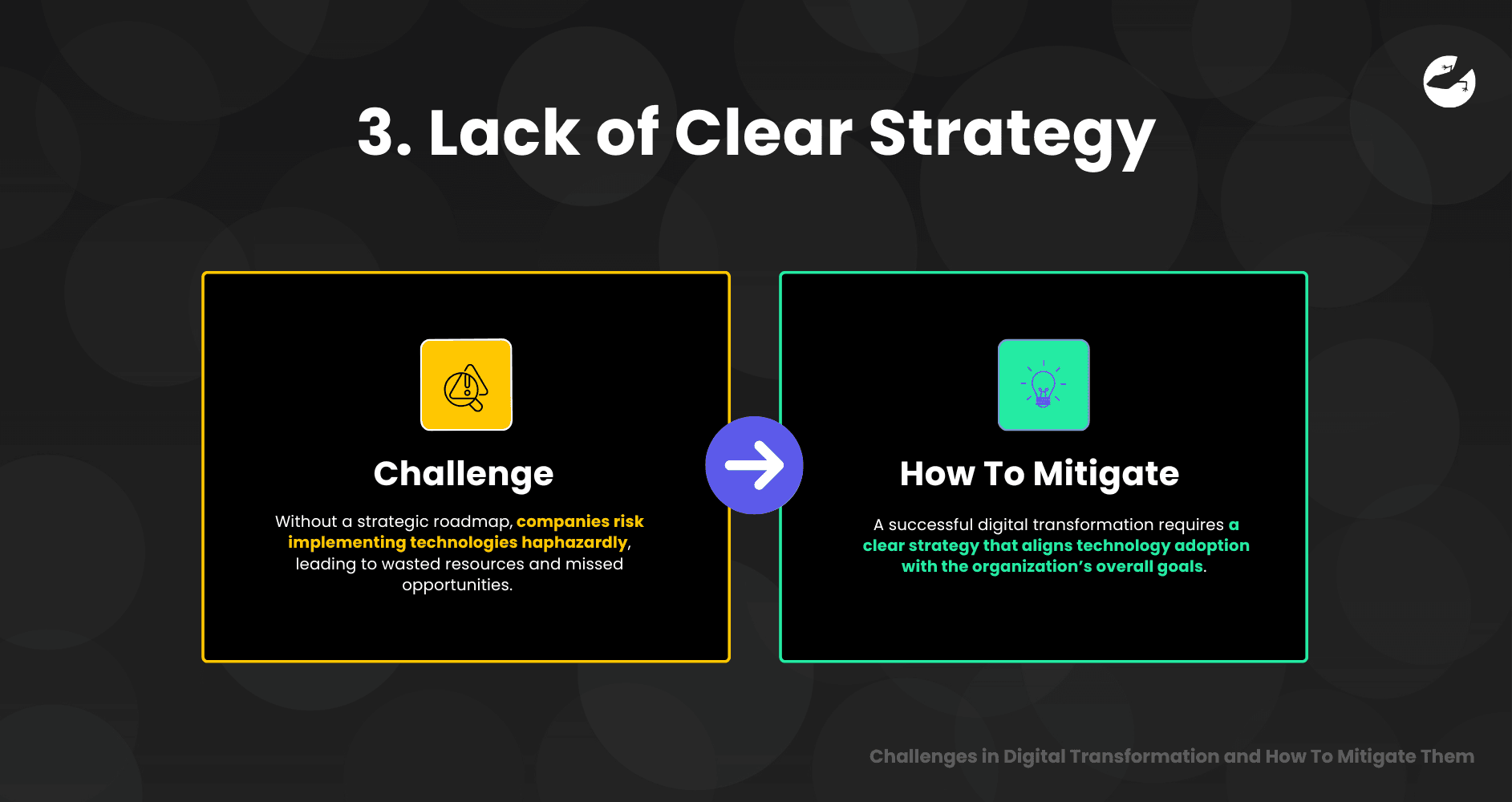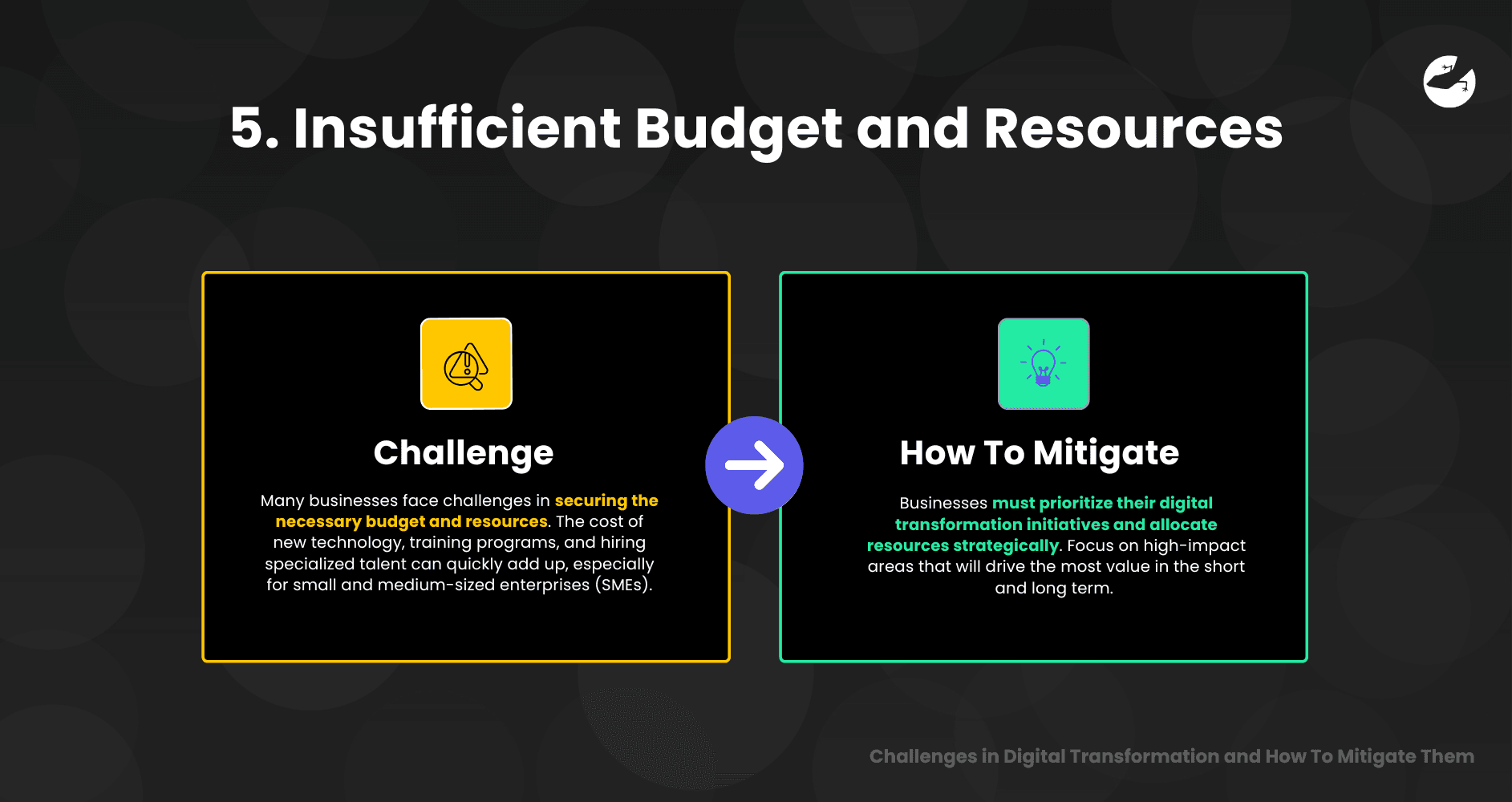Challenges in Digital Transformation and How To Mitigate Them
Get the latest updates about our blog posts.
Subscribe so you don’t miss out!
Digital transformation is no longer a luxury in today’s rapidly evolving business landscape, – it’s a necessity. Companies across industries are adopting digital technologies to streamline operations, enhance customer experiences, and remain competitive. However, the journey to digital transformation is rarely smooth. From cultural barriers to technology integration challenges, organizations face several hurdles that can impede progress.Key Takeaways
- Overcoming Resistance to Change: Emphasizing the importance of creating a culture that supports digital transformation and overcoming employee resistance.
- Leadership Buy-in: Successful digital transformation requires strong leadership to guide and inspire the organization through change.
- Integration of Legacy Systems: Addressing the challenges that come with integrating new digital technologies with existing systems and data.
- Data Management and Security: Understanding the critical role of data security and effective management in the transformation process.
- Continuous Adaptation: Recognizing that digital transformation is an ongoing process that requires continuous improvement and agility.
In this blog, we’ll explore the most common challenges in digital transformation and how to mitigate them to ensure a seamless and successful transition.
The Need for Digital Transformation
The digital era demands that businesses evolve, adopt new technologies, and rethink traditional business models. Whether you’re a small start-up or an established enterprise, digital transformation is critical for staying relevant.
However, as many companies have discovered, embarking on this journey is not without its difficulties. Let’s dive into the top challenges that businesses face during digital transformation and explore practical solutions to overcome them.
1. Resistance to Change

The Challenge: Employee Resistance
One of the most common obstacles in digital transformation is employee resistance. Many organizations face pushback from employees who are either reluctant or fearful of embracing new technologies and processes.
This resistance often stems from a lack of understanding, concerns about job security, or simply discomfort with change.
How to Mitigate It: Foster a Culture of Change
To overcome resistance, businesses need to foster a culture that embraces change. This can be achieved through clear communication about the benefits of digital transformation and its impact on the company’s future.
Involve employees in the decision-making process and provide training and support to ensure they feel confident in using new tools and technologies. Highlighting success stories and showing the value digital transformation brings can also help alleviate concerns.
Example Scenario:
A leading retail chain successfully navigated employee resistance by rolling out training programs, hosting town halls, and involving employees in pilot projects.
This approach not only eased fears but also led to a smoother adoption of digital systems across the organization.
2. Inadequate Technology Infrastructure

The Challenge: Outdated Systems
Many businesses struggle with outdated or incompatible technology infrastructure, which can create significant barriers to digital transformation. Legacy systems may not integrate well with new technologies, leading to inefficiencies and data silos.
How to Mitigate It: Invest in Scalable Solutions
To address this, companies should invest in scalable and flexible technologies that can grow with their needs. Migrating to cloud-based platforms can help overcome infrastructure limitations, as they offer agility, scalability, and seamless integration with other digital tools.
A phased approach to replacing legacy systems with modern alternatives ensures minimal disruption.
Example Scenario:
A large financial institution faced integration issues with its outdated customer relationship management (CRM) system.
By moving to a cloud-based CRM platform, the institution improved customer service and streamlined data-sharing across departments, resulting in a significant boost in efficiency.
3. Lack of Clear Strategy

The Challenge: Undefined Vision
Another significant challenge in digital transformation is the lack of a clear and well-defined strategy. Without a strategic roadmap, companies risk implementing technologies haphazardly, leading to wasted resources and missed opportunities.
A lack of alignment between business objectives and digital transformation goals can result in confusion and ineffective use of digital tools.
How to Mitigate It: Develop a Comprehensive Strategy
A successful digital transformation requires a clear strategy that aligns technology adoption with the organization’s overall goals. Companies should set measurable objectives, define key performance indicators (KPIs), and involve stakeholders across departments to ensure alignment.
Regularly revisiting and adjusting the strategy based on evolving business needs is also essential.
Example Scenario:
A global healthcare provider developed a comprehensive digital transformation strategy that focused on improving patient care, increasing operational efficiency, and enhancing data security.
By aligning the digital initiatives with their overarching business goals, they achieved measurable improvements in patient outcomes and reduced administrative overhead.
4. Data Security and Privacy Concerns

The Challenge: Protecting Sensitive Data
As organizations embrace digital technologies, data security and privacy become increasingly critical. With more data being generated and shared, the risk of cyberattacks, data breaches, and non-compliance with privacy regulations rises.
This challenge is particularly pronounced in industries like healthcare and finance, where data sensitivity is paramount.
How to Mitigate It: Implement Robust Security Measures
To mitigate security risks, businesses must invest in advanced cybersecurity solutions, including encryption, multi-factor authentication, and secure cloud environments. Regularly conducting vulnerability assessments and training employees on data security best practices is essential. Moreover, staying up-to-date with regulatory compliance, such as GDPR or PDPA or HIPAA, ensures that businesses meet data privacy requirements.
Example Scenario:
A leading e-commerce platform faced a significant data breach due to inadequate security protocols.
After investing in a comprehensive security overhaul, including encryption and enhanced authentication processes, the platform regained customer trust and significantly reduced the risk of future breaches.
5. Insufficient Budget and Resources

The Challenge: Budget Constraints
Digital transformation can be costly, and many businesses face challenges in securing the necessary budget and resources.
The cost of new technology, training programs, and hiring specialized talent can quickly add up, especially for small and medium-sized enterprises (SMEs).
How to Mitigate It: Prioritize and Plan Wisely
To mitigate this challenge, businesses must prioritize their digital transformation initiatives and allocate resources strategically. Focus on high-impact areas that will drive the most value in the short and long term. Leveraging cloud technologies and SaaS solutions can reduce infrastructure costs, and outsourcing or partnering with third-party vendors can help mitigate resource constraints.
Example Scenario:
A small manufacturing company faced budget constraints but wanted to adopt digital tools to streamline operations.
By opting for cloud-based solutions and automating certain processes, the company was able to cut costs while improving efficiency.
Want to find out how much it costs to build your dream app or web app?
Overcoming Digital Transformation Challenges with Lizard Global
Digital transformation is a complex and multifaceted process, but the rewards of success are immense. By addressing key challenges such as resistance to change, outdated infrastructure, unclear strategy, security concerns, and resource limitations, businesses can mitigate risks and ensure a smoother transition.

At Lizard Global, we understand the complexities of digital transformation and are committed to helping our clients overcome these hurdles. Whether it’s providing strategic consulting, integrating the latest technologies, or ensuring your business stays compliant with data privacy regulations, we offer tailored solutions to meet your unique needs.
Let us guide you through your digital transformation journey and help you unlock new opportunities for growth and success. Reach out to us today to learn more!




